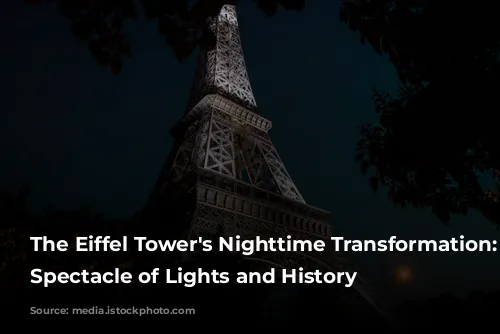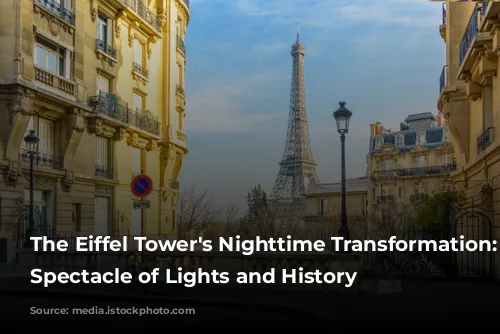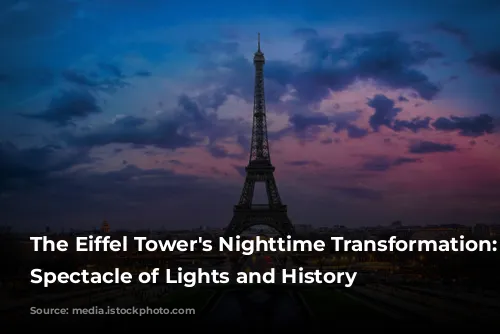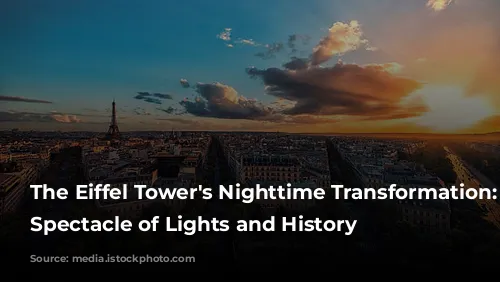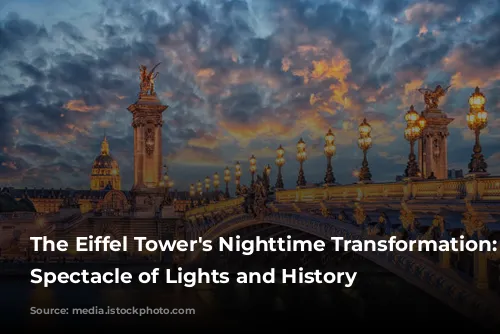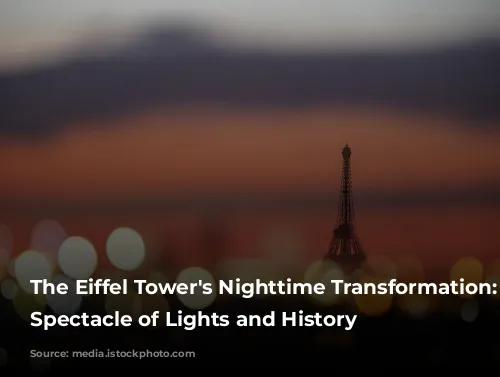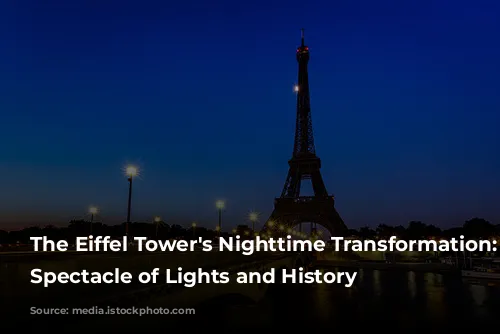Imagine yourself strolling through the City of Lights at night, and suddenly, a majestic silhouette emerges, adorned with sparkling lights. It’s the Eiffel Tower, a symbol of Paris, illuminated in its full glory. This iconic structure transforms after dark, leaving visitors in awe of its nocturnal beauty.
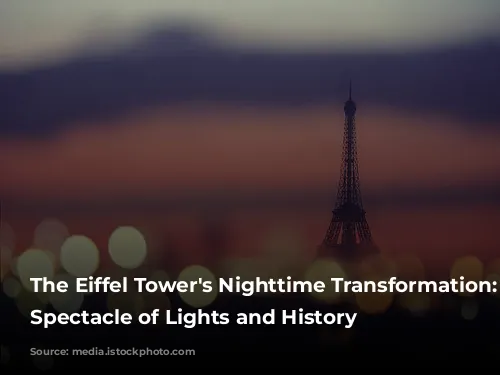
The Evolution of the Eiffel Tower’s Lighting
The Eiffel Tower’s twinkling illumination, which attracts millions of visitors every year, is a relatively recent addition. Initially, the Iron Lady was intended to be dismantled after the 1889 World’s Fair. However, it quickly became a beloved Parisian landmark and was saved from demolition. Over time, the city sought ways to enhance its beauty, and in 1985, the Eiffel Tower received its first major makeover.
On New Year’s Eve of that year, Parisians were treated to a dazzling spectacle as 336 yellow-orange spotlights illuminated the tower, highlighting its delicate curves. These lights served a dual purpose: to showcase the tower’s architectural beauty and to ensure its safety during nighttime hours.
Even before electricity became commonplace, the Eiffel Tower boasted gas lights strategically placed throughout its structure. This ensured the safety of visitors exploring the tower after dark.
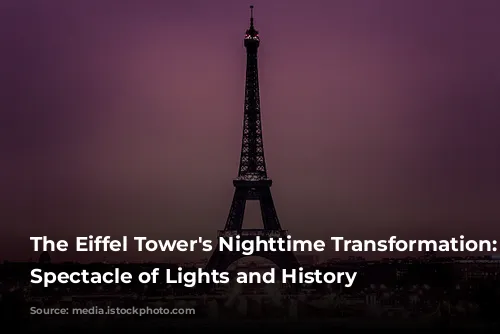
The Rhythmic Dance of Lights
The Eiffel Tower’s nightly illumination is a carefully orchestrated performance. As darkness descends, light sensors trigger the tower’s projectors, casting a golden glow over Paris. This mesmerizing display is punctuated by a five-minute twinkling spectacle at the top of every hour, until 11 p.m. The lights then gracefully dim and the tower closes at 11:45 p.m.
The tower’s nighttime illumination has been a subject of debate in recent years, as Paris grapples with energy conservation measures. Previously, the lights remained on until 1 a.m., accounting for 4% of the tower’s annual electricity consumption. While reducing the lighting time to 11:45 p.m. is a symbolic gesture, it has a minimal impact on the tower’s overall energy use.
Despite this, the Eiffel Tower has made strides in reducing its environmental footprint. In 2004, the power consumption of the projectors was significantly reduced, and the 20,000 lights were converted to energy-efficient xenon lamps.
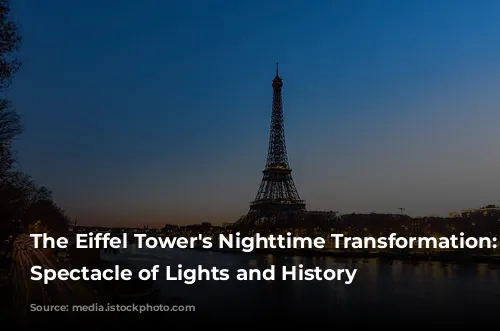
Capturing the Magic: Photography and Copyright
The Eiffel Tower is one of the most photographed monuments in France, drawing countless visitors eager to capture its beauty. While anyone can take a selfie with the tower, day or night, the rules are different for professional photographers.
The Eiffel Tower’s nighttime illuminations are protected by copyright, and professional photographers need permission from the Société d’Exploitation de la Tour Eiffel to use images of the illuminated tower. This often involves paying a fee for exploitation rights.
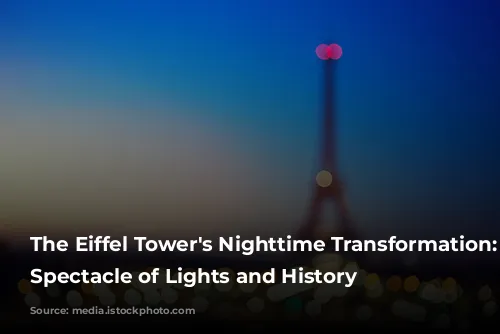
The Eiffel Tower’s Lighthouse: A Beacon of History and Symbolism
Beyond the dazzling lights and sparkling spectacle, the Eiffel Tower boasts a lighthouse atop its highest point, casting a beam across the Parisian skyline.
Initially, the lighthouse was designed to illuminate the city’s monuments, showcasing their beauty in the darkness. With the widespread adoption of electric lighting, the lighthouse’s role shifted in 1947 to serve as a beacon for air navigation.
Today, the lighthouse has evolved into a symbol of global unity, its two beams reaching 80 km, twice the length of the Paris ring road.
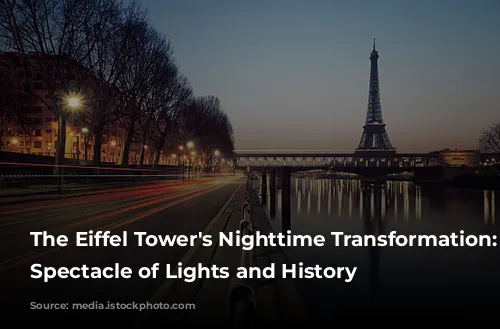
A Nighttime Experience Unlike Any Other
For those fortunate enough to visit the Eiffel Tower, a nighttime visit is a must. The experience is transformative, offering a unique perspective on this iconic structure.
The Eiffel Tower’s opening hours vary depending on the time of year. During weekends, summer, and school holidays, evening visits are typically possible. While the stairs are generally accessible until 6 p.m., you’ll need to take the elevator if you arrive after this time.
To fully appreciate the tower’s nighttime magic, it’s best to arrive as the sun sets, taking the stairs to the top. The illuminated structure creates an enchanting atmosphere, while the sunset offers a glimpse of the city’s beauty.
At the peak, the champagne bar beckons with breathtaking views of Paris bathed in the glow of a thousand lights.
For a more formal culinary experience, head to the first floor, where Madame Brasserie, orchestrated by celebrated chef Thierry Marx, awaits. The second floor offers a more refined option at Jules Verne, a Michelin-starred restaurant led by gastronomic chef Frédéric Anton.
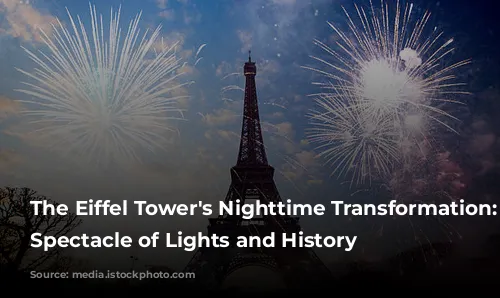
Immerse Yourself in the Sparkle
The Eiffel Tower’s dazzling lights are a captivating sight for anyone passing by. But experiencing the sparkles firsthand while visiting the tower is truly unforgettable.
For the ultimate immersion, head to the second floor, near the Jules Verne, at the beginning of every hour. For five minutes, you’ll be enveloped in the twinkling lights, feeling the magic of the Eiffel Tower’s nocturnal transformation.
If you’re planning a trip to Paris, don’t just visit the Eiffel Tower during the day. Venture into the night and discover the magic of this iconic structure illuminated against the Parisian skyline.
